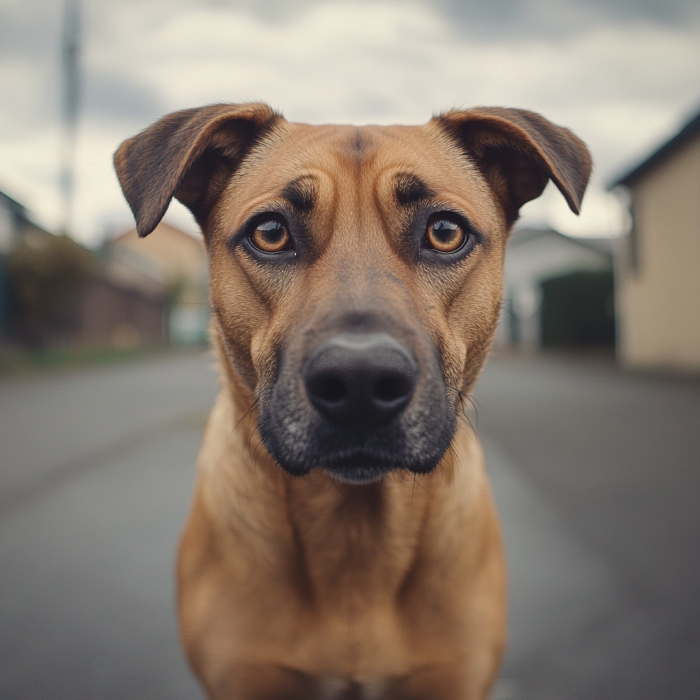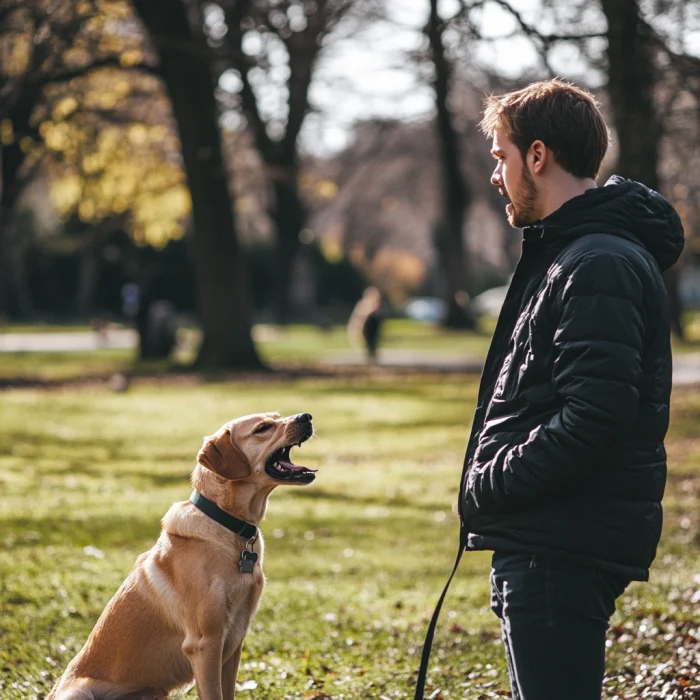Discover what a reactive dog is, how to identify one, and how to manage reactive behavior effectively. Learn from an expert’s perspective on the causes and solutions for reactive dog behavior.
What Is a Reactive Dog? An Expert Explains

Table of Contents
- What Is a Reactive Dog?
- Signs of a Reactive Dog
- Why Do Dogs Become Reactive?
- Common Triggers for Reactive Dogs
- How to Train a Reactive Dog
- Best Practices for Managing Reactive Dog Behavior
- Understanding the Psychology of a Reactive Dog
- Professional Help for Reactive Dogs
- Preventing Reactivity in Dogs
- Conclusion
1. What Is a Reactive Dog?
A reactive dog is a dog that responds with exaggerated or intense behavior to certain stimuli, such as people, other animals, or specific situations. This behavior might manifest as barking, growling, lunging, or even fear-based actions like cowering or fleeing. Unlike aggressive dogs, reactive dogs are often not trying to harm others but are overreacting to the situation at hand.
Being reactive can be stressful both for the dog and their owner, but the good news is that with the right approach, a reactive dog can lead a happy, fulfilling life. Understanding why dogs become reactive and learning to manage this behavior is essential for both you and your pet.
2. Signs of a Reactive Dog
Identifying a reactive dog requires close observation of their body language and behavior. Common signs of reactivity include:
- Barking or Growling: Loud vocalizations, often in response to unfamiliar people, animals, or situations.
- Lunging: A sudden movement toward the perceived threat, often coupled with barking or growling.
- Whining or Whimpering: Signs of anxiety or frustration when the dog feels overwhelmed.
- Stiff Posture: A rigid, tense body stance as the dog prepares for potential action.
- Pacing or Restlessness: Continuous movement in an attempt to escape or confront a stressful situation.
- Fearful Behavior: A reactive dog may also exhibit signs of fear, like hiding or trembling.
Recognizing these behaviors early allows owners to address the underlying cause of the reactivity.
3. Why Do Dogs Become Reactive?
Understanding the root cause of a dog’s reactivity is crucial for effective management. Common reasons why dogs become reactive include:
- Lack of Socialization: Dogs that haven’t been exposed to a variety of people, animals, and environments as puppies may develop fear or anxiety, leading to reactive behavior.
- Previous Trauma: Dogs that have experienced abuse or negative encounters might react out of fear.
- Genetics and Breed Tendencies: Certain breeds may be more prone to reactivity, especially if they were originally bred for guarding or protective roles.
- Medical Issues: Physical discomfort or illness can also lead to irritability and reactivity. Pain may cause a dog to overreact to stimuli they would normally ignore.
- Lack of Training or Structure: Dogs that haven’t received proper training or who lack clear rules may exhibit reactive behavior as a way to cope with confusion or uncertainty.
4. Common Triggers for Reactive Dogs
There are various triggers that can set off a reactive dog. Some of the most common include:
- Other Dogs: Many dogs react strongly to the presence of other dogs, especially if they’ve had bad experiences in the past.
- Strangers or New People: Reactive dogs may bark or growl when encountering unfamiliar faces, particularly if they feel their territory is threatened.
- Certain Noises or Movements: Loud sounds, sudden movements, or even certain types of vehicles can be startling to a reactive dog.
- Leash Reactivity: Some dogs act out when on a leash, due to the limited space and lack of escape options. This often happens when they feel trapped.
- Change in Routine: Dogs thrive on routine, and any sudden change can cause anxiety and trigger reactivity.
Understanding these triggers helps owners avoid situations that could lead to reactivity and work on desensitizing their dog to these stimuli.
5. How to Train a Reactive Dog
Training a reactive dog requires patience, consistency, and a calm approach. Here are some effective training strategies:
- Desensitization: Gradually expose your dog to the triggers that cause reactivity, starting at a distance where the dog feels safe, and slowly decrease the distance over time.
- Counter-Conditioning: Change your dog’s emotional response to a trigger by associating the trigger with something positive, such as treats or toys.
- Positive Reinforcement: Reward your dog for calm behavior when encountering triggers, encouraging them to remain relaxed in stressful situations.
- Focus and Redirection: Teach your dog a reliable “focus” command, such as looking at you when a trigger is present, to redirect their attention away from the stimulus.
Remember, training takes time and should be done in a safe and controlled environment.
6. Best Practices for Managing Reactive Dog Behavior
Managing a reactive dog requires constant attention and awareness of the dog’s needs. Here are a few best practices for handling reactivity:
- Avoid Punishment: Punishing a reactive dog can escalate fear and anxiety, making the behavior worse.
- Keep a Safe Distance: If you know your dog is reactive to certain triggers, avoid putting them in situations where they might react, such as crowded places or busy streets.
- Use a Harness and Leash: A well-fitted harness can give you more control over your dog’s movement and reduce the likelihood of injury.
- Manage Stress: Ensure your dog gets plenty of physical and mental stimulation to reduce overall stress and anxiety.
Implementing these practices will help ensure your dog stays as calm and comfortable as possible in potentially stressful situations.
7. Understanding the Psychology of a Reactive Dog
The psychology of a reactive dog is deeply tied to their emotional state. Reactivity is often driven by fear, anxiety, or frustration, and understanding these emotions can help owners address the behavior more effectively. A reactive dog typically feels overwhelmed by a stimulus, which leads to their outwardly exaggerated response. By addressing the underlying emotional state, owners can help their dog feel more secure and less reactive over time.
8. Professional Help for Reactive Dogs
If your dog’s reactivity is severe or difficult to manage on your own, seeking help from a professional can be beneficial. Professional dog trainers, particularly those specializing in behavior modification, can provide expert guidance and support. A veterinary behaviorist may also be necessary if there are medical concerns contributing to your dog’s reactivity.
9. Preventing Reactivity in Dogs
Preventing reactivity is much easier than trying to correct it once it’s established. Early socialization, consistent training, and exposure to various environments are key to preventing future reactivity in dogs. By starting early and providing a positive, structured environment, you can significantly reduce the chances of developing reactive behaviors.
10. Conclusion
Understanding what a reactive dog is, and how to manage their behavior, is essential for any dog owner. With the right training, consistency, and patience, reactive dogs can live happy and healthy lives. If your dog exhibits reactive behavior, take the time to assess the triggers, address the underlying causes, and work with a professional trainer if needed. With effort and dedication, you can build a stronger bond with your dog and help them navigate the world more confidently.
For more pets-related articles, click here:
https://ledstk.com/category/pets/
For recipe lovers, see here:
https://sotastyrecipe.com
